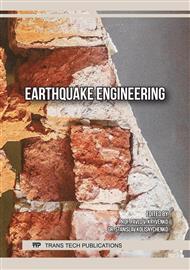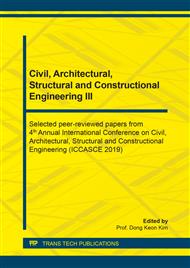p.179
p.185
p.190
p.195
p.202
p.211
p.221
p.226
p.231
Experimental Study on the Seismic Behavior of Semi-Precast Reinforced Concrete High-Rise Buildings Using Shaking Table
Abstract:
Currently, theoretical and experimental studies on the overall behavior of semi-precast reinforced concrete high-rise buildings subjected to the earthquake are limited. These studies have mostly focused on the behavior of either joints or frames. To study the overall behavior of a structure under an earthquake, one of the best methods is to do the seismic shaking table test. This paper presents the results of an experimental study on the overall behavior of a semi-precast reinforced concrete multi-story building, which uses new design and construction technology, by using the seismic shaking table test method. These buildings are constructing in series in Vietnam. This research carried out both the linear and nonlinear behavior of the structure until the stage of near collapse. The study consists of three main steps: designing the simulating model; establishing a process to generate artificial accelerograms which are in accordance with the seismic characteristics in Vietnam; testing the 12-story semi-precast model to verify theoretical predictions.
Info:
Periodical:
Pages:
202-210
Citation:
Online since:
April 2020
Authors:
Keywords:
Price:
Сopyright:
© 2020 Trans Tech Publications Ltd. All Rights Reserved
Share:
Citation:



